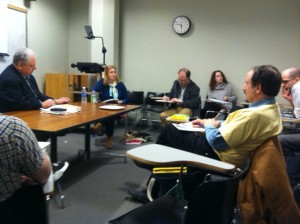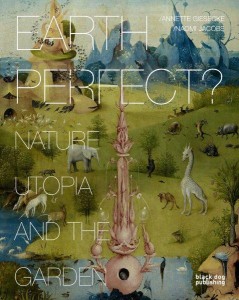“Baby-Making” as Critiques of Capitalistic Society
Thursday, March 28th, 2013If nothing else, in recent years, American society has become more familiar with ideas of reproductive assistance– from surrogacy to in-vitro fertilization to hormone injections and everything in between. Dystopian literary endeavors seem to have taken these ideas and multiplied them, representing the fears around fertility issues and the medical establishment’s involvement in reproductive assistance– representing fears around literally making babies in removed environments. Some of these representations don’t hinge on the medical; instead, “baby making” is used as a vehicle for a criticism of capitalistic society. The commercialization of reproduction and the way that it is branded, advertised and marketed towards dystopian societies reflects a criticism of capitalism in the most basic way… if these theoretical societies condone the blatant ‘selling’ of the creation of human life, what remains?
In MT Anderson’s Feed, Violet messages Titus with a long backstory of her life, as she knows she’s dying. She talks about her mother and father being together and writes, “I always thought it was strange that they decided to have a kid at a conceptionarium. I guess they really wanted to have me freestyle. They talked about it a lot. Well, I mean, they’d only been going out for a few months, but, you know, a lot for that. Anyway, the ambient radiation was already too bad by then for freestyle. So they went test-tube” (225). The idea of “freestyling” as code for having a child and the prevalence of the conceptionarium in a society made sterile by ambient radiation, so that freestyling becomes a choice or a resistance movement speaks deeply about the highly capitalistic society Anderson gives us. In Feed, the feeds implanted into the wiring of the human mind allow instant communication and provide a constant stream of advertisements, in addition to information and social media. Violet’s parents resist the feeds and opt out for themselves, but her father eventually chooses to allow Violet to get a feed (which leads, ultimately, to her death). In their case, once freestyling fails to produce a child, they have no other option. The parents of Titus, however, recount their decision to have Titus to him as one based in superficial desire; they choose his features based on a little-known actor and add in specific features from their own genetic pool. The making of baby Titus emphasizes consumerism and the aesthetic choices that informed the decisions of his parents, whereas Violet’s narrative underscores the fact that reproductive assistance was so necessary because of environmental factors that even those interested in ‘bucking the system’ were left with no choice.
In the much darker Oryx and Crake by Margaret Atwood, the main character Jimmy/Snowman tells about the downfall of human society when science and capitalism become too intertwined. His stepmother, Ramona, marries his father and they immediately tell him that they want a child. Atwood writes, “Ramona would write him chatty, dutiful messages: no baby brother for him yet, she’d say, but they were still ‘working on it.’ […] If nothing ‘natural’ happened soon, she said, they’d try ‘something else’ from one of the agencies– Infantade, Foetility, Perfectababe, one of those. […] She was doing her ‘research,’ because of course they wanted the best for their money” (250). The competitive baby-making industry represented here, once more contingent on the desperation of a couple who wants to conceive, is even more explicit with the titling of the “agencies” and the marketing that these names represent. Furthermore, Jimmy’s narrative spends time imaging his father and stepmother creating a child in ‘trial runs’ that would allow them to have the perfect child and then load up the child with ‘bloated expectations’ but admits that he secretly envies the unborn child for the advantages that such a creation could give him– including the admiration and support of his father, which Jimmy felt denied of as a child.
Perhaps the most scathing critique of capitalist society is represented by Megan McCafferty in her novels Bumped and Thumped. These books present a world in the wake of the creatively-titled Human Progressive Sterility Virus, known as HPSV. At this point, most people become sterile around the age of 17 or 18, as the virus sets in, and rely upon the adoption of children birthed by teenagers, who are taught from a young age that reproduction is desirable, sexy, and profitable. The book opens by talking about the two twin sisters, Harmony and Melody, in a store called “Babies-R-U”– full of t-shirts that simulate different “sizes” of pregnancies, ‘You-Glow-Girl! stretchmark cream, and other items meant to convince young girls that pregnancy-for-profit is desirable and ‘fun’ as well as necessary. One of the narrators converses with the saleswoman about her pregnancy-simulation, and McCafferty writes, “’And you’ll note the tiny, tasteful stretch marks,’ [the saleswoman] continues, lifting my brand-new expandable-contractable MyTurnTee” (20). Shortly after, the sisters run into newly pubescent girls running excitedly around the store and they notice a girl’s shirt: “The front of the redhead’s T reads: DO THE DEED. As she hops around in excited circles, I catch the phrase on the back: BORN TO BREED. Indeed” (25). The opening of the book with this scene, along with the eventual resistance that the sisters offer to a world full of “reproductive professionals” who are sought out by future parents to get the ‘best’ for their money and infants being auctioned off to desperate, sterile adults, places emphasis on the consumerism inherent in this dystopia. Baby-making by teens becomes necessary– condoms are made illegal– and the purchase of infants as valuable and relatively rare commodities only spurs a capitalistic society towards marketing and selling a fantasy of pregnancy to young women.



